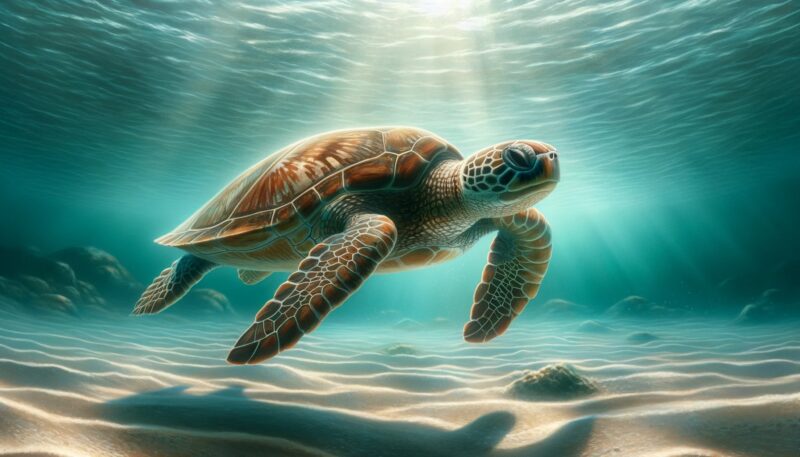Reptiles, a fascinating group of animals that includes snakes, lizards, turtles, and crocodiles, have captivated our imagination for centuries. However, beyond their scales and varied habitats lies a complex and intriguing aspect of their biology: how they breathe.
Unlike mammals and birds, reptiles have unique respiratory systems tailored to their cold-blooded existence. Today, I will walk you through the details of reptilian respiration, exploring how these creatures have adapted to their environments through their breathing mechanisms.
Key Takeaways
- Reptiles breathe exclusively through their lungs, which differ in structure and efficiency among species.
- Being cold-blooded (ectothermic), reptiles rely on external temperatures to regulate their breathing and overall metabolism.
- Aquatic reptiles, like sea turtles, have adapted to hold their breath for extended periods underwater, a unique adaptation among reptiles.
- Reptilian respiratory systems are influenced by their feeding habits, with some species requiring less oxygen due to infrequent feeding.
- The study of reptilian respiration offers insights into evolutionary biology and environmental adaptation, highlighting the importance of these creatures in our ecosystems.
Reptilian Anatomy and Respiration
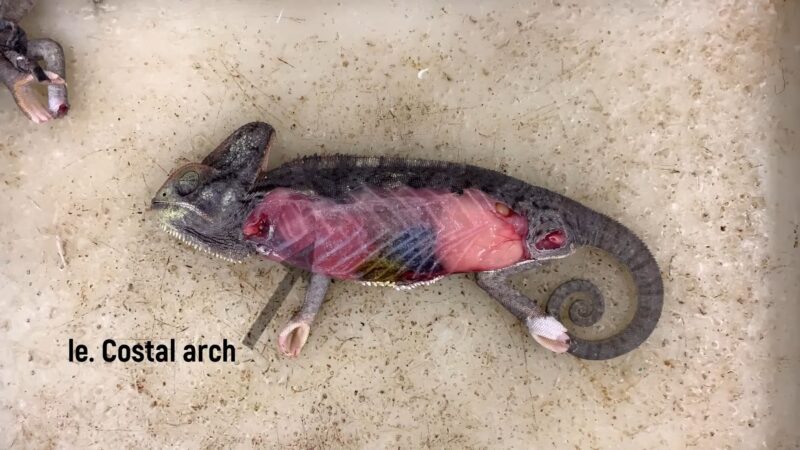
First, let’s explore the fundamental aspects of reptilian breathing. Reptiles breathe exclusively through their lungs, a trait they share with birds and mammals.
This is a significant difference from amphibians, which can absorb oxygen through their skin. Reptilian lungs are more primitive than those of mammals but are remarkably efficient for their needs.
How Does Lung Structure Vary Among Reptiles?
Different types of reptiles have distinct lung structures. For example, snakes have elongated lungs that are adapted to their slender bodies, while turtles have a more compact lung design to fit within their shells.
Breathing Techniques Across Species
- Turtles: Turtles are an anomaly, with their rigid shells restricting the expansion and contraction of their lungs. They rely on specific muscle movements to pump air in and out of their lungs.
- Snakes: Snakes use a combination of rib movements and muscular contractions to breathe, which is particularly intriguing given their elongated bodies.
- Lizards and Crocodiles: These reptiles have a more conventional lung structure and breathing mechanism, similar to that of mammals, with the diaphragm playing a less prominent role.
The Challenges of Being Cold-Blooded
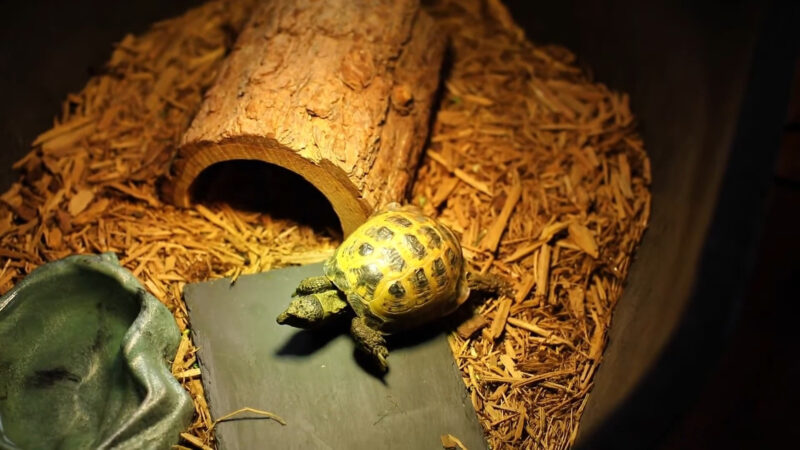
Temperature Dependence
Reptiles are ectotherms, meaning they regulate their body temperature externally. This dependence on external heat sources influences their respiratory rate.
When it’s cold, their metabolism slows down, and so does their breathing. In warmer conditions, their metabolism ramps up, leading to increased respiratory activity.
How Do Reptiles Manage Extreme Temperatures?
Reptiles have adapted to manage extreme temperatures by basking in the sun to warm up or seeking shade to cool down. This behavioral thermoregulation is crucial for maintaining an optimal body temperature for efficient respiration and overall health.
How Do Sea Turtles and Other Reptiles Breathe Underwater?
Sea Turtles
Sea turtles are a remarkable example of reptilian adaptation. These creatures can hold their breath for extended periods while diving.
But how do they manage this feat?
- Slow Metabolism: Underwater, sea turtles slow their metabolism, reducing their need for oxygen.
- Oxygen Storage: They have an increased capacity to store oxygen in their blood and muscles.
Snakes in Water
Some aquatic snakes have adapted to breathe partially through their skin, allowing limited gas exchange. This adaptation is not as efficient as lung breathing but offers an advantage in aquatic environments.
Feeding Habits and Respiratory Implications
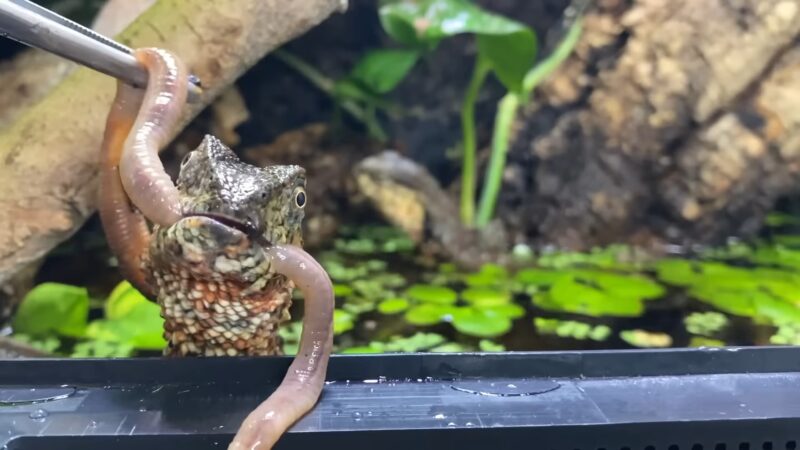
Reptiles don’t require daily feeding. Some, like certain snake species, may eat only once a year. This infrequent feeding pattern reduces their metabolic needs and, consequently, their respiratory requirements.
It’s a fascinating example of how diet influences respiration.
Comparing Respiration
While reptiles and mammals both rely on lungs for respiration, the efficiency and mechanisms differ significantly. Mammalian lungs are more complex and allow for a higher metabolic rate, supporting more energy-intensive activities.
Reptilian vs. Mammalian Respiration
| Aspect | Reptiles | Mammals |
| Lung Structure | Simpler, less divided | More complex, highly divided |
| Metabolic Rate | Lower, varies with temperature | Higher, consistent |
| Oxygen Demand | Lower, changes with activity | Higher, more constant |
| Breathing Mechanism | Varies among species | Diaphragm-based |
Why Do Reptiles Breathe the Way They Do?
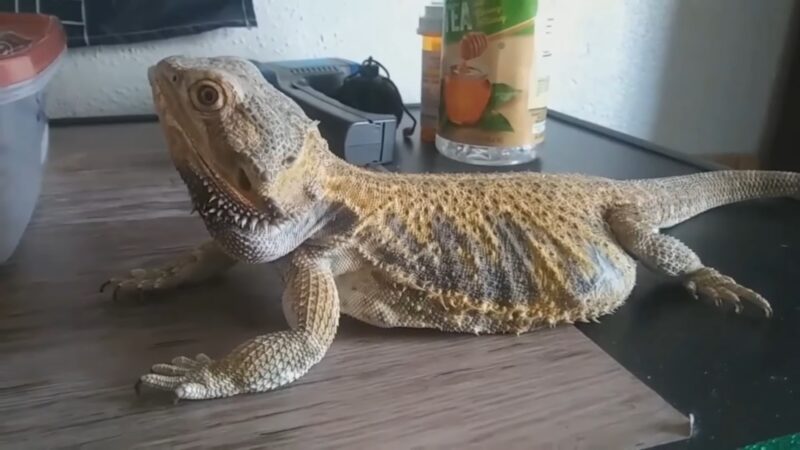
Reptiles have evolved breathing mechanisms that suit their ecological niches and lifestyles. From the energy-conserving techniques of snakes to the aquatic adaptations of sea turtles, each reptilian breathing strategy reveals a deep connection to their environment.
The Trade-Offs of Being Cold-Blooded
While being cold-blooded has its advantages, like lower food and oxygen requirements, it also comes with trade-offs. Reptiles are more vulnerable to environmental temperature changes and cannot sustain high-energy activities for long periods.
How Did Reptilian Respiration Evolve?
The evolutionary shift from aquatic to terrestrial life necessitated significant changes in respiratory systems. Early reptiles evolved from amphibian ancestors, adapting their lungs to be more efficient in air rather than water.
This evolution marked a crucial step in the development of modern reptiles.
Fossil Evidence and Theories
Fossil evidence suggests that early reptiles had simple lung structures. Over millions of years, these structures became more sophisticated, allowing for better oxygen absorption and more efficient breathing.
The Role of the Amniote Egg
The amniote egg, which allows embryos to develop on land, was another significant evolutionary leap. This adaptation meant that early reptiles no longer depended on water for reproduction, further anchoring their terrestrial lifestyles and influencing their respiratory evolution.
Impact on Ecosystems
Reptiles play critical roles in their ecosystems. Their unique respiratory systems contribute to their ability to inhabit diverse environments, from deserts to rainforests and even oceans.
Predators and Prey
As both predators and prey, reptiles are integral to maintaining ecological balance. Their breathing adaptations allow them to hunt effectively and escape predators, thus sustaining the food chain.
FAQs
Do all reptiles have the same lung capacity?
No, lung capacity varies significantly among reptile species. Factors like body size, habitat, and lifestyle greatly influence their lung capacity.
Can reptiles breathe through their mouths?
Yes, some reptiles can breathe through their mouths, especially in stressful situations or when their nasal passages are obstructed.
Do reptilian respiratory systems change as they grow?
Yes, as reptiles grow, their respiratory systems also develop and become more efficient to meet the increased oxygen demands of their larger bodies.
Are there reptiles that can breathe underwater?
No reptiles can breathe underwater in the same way as fish; they all need to surface for air. However, some can hold their breath for extended periods.
How do high altitudes affect reptilian breathing?
Reptiles at high altitudes may have adaptations for more efficient oxygen uptake due to the thinner air, but this can vary widely among species.
Do reptiles get respiratory infections?
Yes, reptiles can suffer from respiratory infections, often indicated by symptoms like wheezing, mouth breathing, and nasal discharge. Environmental factors and stress can contribute to these infections.
Final Words
The way reptiles breathe is a testament to the diversity and adaptability of life on Earth. Understanding their unique respiratory systems not only gives us insights into their survival strategies but also highlights the intricate relationships between anatomy, physiology, and the environment.
As we continue to study these remarkable creatures, we uncover more about the complexity and beauty of the natural world. Reptiles, with their diverse range of respiratory adaptations, remind us of the incredible evolutionary journey of life on our planet.
Related Posts:
- Are Turtles Reptiles? Fascinating Reptiles Explained
- Taiga Food Web: Interconnected Relationships between…
- What Are the Differences Between Mammals and Birds?…
- Difference Between Male and Female Bald Eagles:…
- Banded Water Snake: Facts, Diet, Habitat - Secrets…
- What Is the Difference Between a Coyote and a Wolf?…


